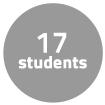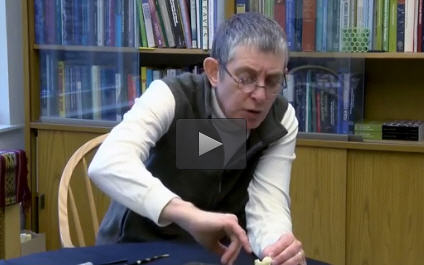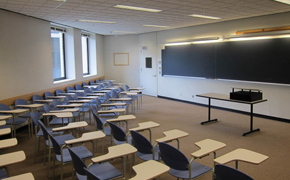Instructor Insights pages are part of the OCW Educator initiative, which seeks to enhance the value of OCW for educators.
Course Overview
This page focuses on the course 3.054 Cellular Solids: Structure, Properties and Applications as it was taught by Dr. Lorna Gibson in Spring 2014.
This course spotlights the structure and mechanical behavior of honeycombs and foams; students apply models for the behavior of cellular solids to applications in engineering and medicine and to natural materials.
Course Outcomes
Course Goals for Students
- Learn about the structure of cellular materials and to understand how that structure can be related to mechanical or thermal properties of the materials.
- Gain an appreciation of the broad range of cellular materials, and how similar principles can be applied to all of these materials.
Possibilities for Further Study/Careers
Academic and industry careers, including biomedical engineering, orthopedics, osteoporosis, orthopedic materials, and materials for engineering applications.
In the following short videos, Professor Lorna Gibson describes various aspects of how she taught 3.054 Cellular Solids.
- Faculty Introduction and Background
- Project Examples
- Project Logistics and Support
- Lecture Preparation
- Role of Images in the Course
- Unique Aspects of the Course
Curriculum Information
Prerequisites
3.032 Mechanical Behavior of Materials
Requirements Satisfied
- Restricted Elective

- Can be applied toward a Bachelor of Science in Materials Science and Engineering but is not required.
Offered
Offered every spring.
Assessment
The students' grades were based on the following activities:
 10% Problem sets (5)
10% Problem sets (5) 30% Project
30% Project 60% Tests (2)
60% Tests (2)Student Information

Breakdown by Year
Undergraduates (mostly juniors or seniors), and graduate students.
Breakdown by Major
Mainly material science and engineering students.
Typical Student Background
Students must have taken a course in solid mechanics or mechanical behavior of material in order to be able to follow the derivations and understand what goes on in this course.
During an average week, students were expected to spend 12 hours on the course, roughly divided as follows:
In Class
- Met 2 times per week for 1.5 hours per session; 25 sessions total.
- Mostly lecture.
Out of Class
Semester Breakdown
| WEEK | M | T | W | Th | F |
|---|---|---|---|---|---|
| 1 |  |  |  |  |  |
| 2 |  |  |  |  |  |
| 3 |  |  |  |  |  |
| 4 |  |  |  |  |  |
| 5 |  |  |  |  |  |
| 6 |  |  |  |  |  |
| 7 |  |  |  |  |  |
| 8 |  |  |  |  |  |
| 9 |  |  |  |  |  |
| 10 |  |  |  |  |  |
| 11 |  |  |  |  |  |
| 12 |  |  |  |  |  |
| 13 |  |  |  |  |  |
| 14 |  |  |  |  |  |
| 15 |  |  |  |  |  |
| 16 |  |  |  |  |  |
 No classes throughout MIT
No classes throughout MIT Lecture session
Lecture session Assignment due date
Assignment due date Exam
Exam No class session scheduled
No class session scheduled Guest speaker
Guest speaker Office hours
Office hours


 Room 1 of 1
Room 1 of 1 